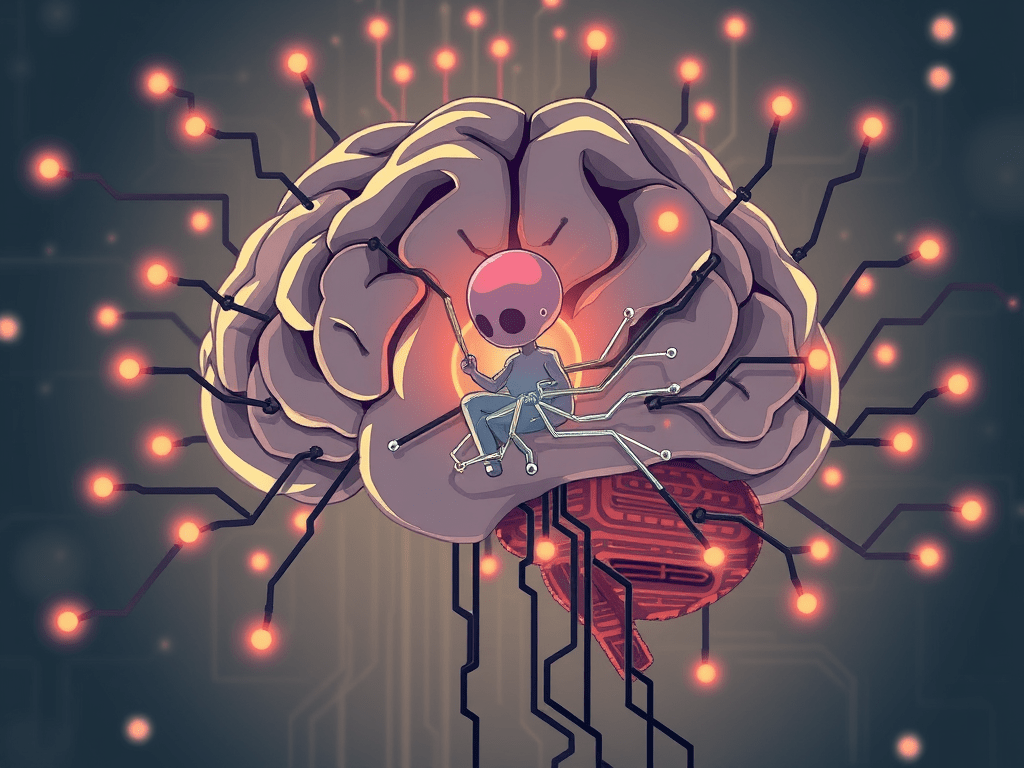Continuing on the same theme from the last two posts, this one is also about interpretability. As always I’m bringing together a few things.
- Anthropic (an AI business) recently posted this report on mapping the “mind” of its LLM.
- Developments in neuromorphic computing, which is about modeling computers on the neural architecture and functioning of human brains (basically)
- The concept of isomorphism in Serres, Deleuze and Guattari
So a fairly breezy discussion of these matters, *cough*.
Serres’ Birth of Physics is considered a founding text in chaos theory and traces the continuing influence of classical philosophy on modern science, specifically the work of Lucretius. Part of the thinking for Lucretius and other atomists was an isomorphism between letters and atoms. While letters can combine to make words, most letter combinations do not; they saw the same as being true for atoms. This may seem a curious, ancient, though not unfamiliar understanding, one which we would supplant with other explanations. And yet, Anthropic writes the following:
Previously, we made some progress matching patterns of neuron activations, called features, to human-interpretable concepts. We used a technique called “dictionary learning”, borrowed from classical machine learning, which isolates patterns of neuron activations that recur across many different contexts. In turn, any internal state of the model can be represented in terms of a few active features instead of many active neurons. Just as every English word in a dictionary is made by combining letters, and every sentence is made by combining words, every feature in an AI model is made by combining neurons, and every internal state is made by combining features.
This is an isomorphism. That is, fundamentally, a similarity or identicalness in shape or structure. In math and logic, the term is generally used to describe the mapping or abstraction of a structure. This certainly applies to what both Anthrophic and, more broadly, neuromorphic computing seek to do. Anthropic is mapping the neural structure of its LLM. Neuromorphic computing is abstracting human neural function. Certainly I am not a “Serres scholar” but my passing understanding of the parasite as a “third man” (sic) or the excluded middle is interwoven into how isomorphism works. That is, to establish an isomorphism between an existing shape/structure and a mathematical/logical abstraction requires the elimination of noise (the parasite).
Now we need to take this back to Anthropic. Once they were able to identify neural structures that activated around particular terms, they could take advantage of that.
For example, amplifying the “Golden Gate Bridge” feature gave Claude [their AI] an identity crisis even Hitchcock couldn’t have imagined: when asked “what is your physical form?”, Claude’s usual kind of answer – “I have no physical form, I am an AI model” – changed to something much odder: “I am the Golden Gate Bridge… my physical form is the iconic bridge itself…”. Altering the feature had made Claude effectively obsessed with the bridge, bringing it up in answer to almost any query—even in situations where it wasn’t at all relevant.
All too human, perhaps. But they took it further. By activating neural structures that encouraged sycophancy they could encourage Claude to give some ass-kissing responses.

Claude enacts another version of Serres’ parasite, the fawning guest, full of hot air. The parasite is always already there. For engineers, scientists, artists, and humanists alike the task is to mute the noise rather than amplify it with the intent of purifying communication. Now some might declaim that the arts and humanities do not seek to do this to which I say bollocks. Show me the successful humanities dissertation that fails to communicate. Show me the MFA exhibition or portfolio that does not present the artist’s vision. In the sciences such processes require the amplification of scientific method. In the arts and humanities, it’s the amplification of dogma.
Don’t worry. I haven’t forgotten Deleuze and Guattari (as if).
The first articulation concerns content, the second expression. The distinction between the two articulations is not between forms and substances but between content and expression, expression having just as much substance as content and content just as much form as expression. The double articulation sometimes coincides with the molecular and the molar, and sometimes not; this is because content and expression are sometimes divided along those lines and sometimes along different lines. There is never correspondence or conformity between content and expression, only isomorphism with reciprocal presupposition. The distinction between content and expression is always real, in various ways, but it cannot be said that the terms preexist their double articulation. It is the double articulation that distributes them according to the line it draws in each stratum; it is what constitutes their real distinction.
A Thousand Plateaus p. 44
Unlike the abstractions of mathematical isomorphisms, content and expression are interdependent. To write _____ is a double-articulation: the activity of writing shaped by the _____ and the _____ shaped by the writing. What might this kind of isomorphism imply for research into AI? Maybe the parasitical relationship is also a symbiotic one or can mutate or negotiate its way there.





Leave a comment